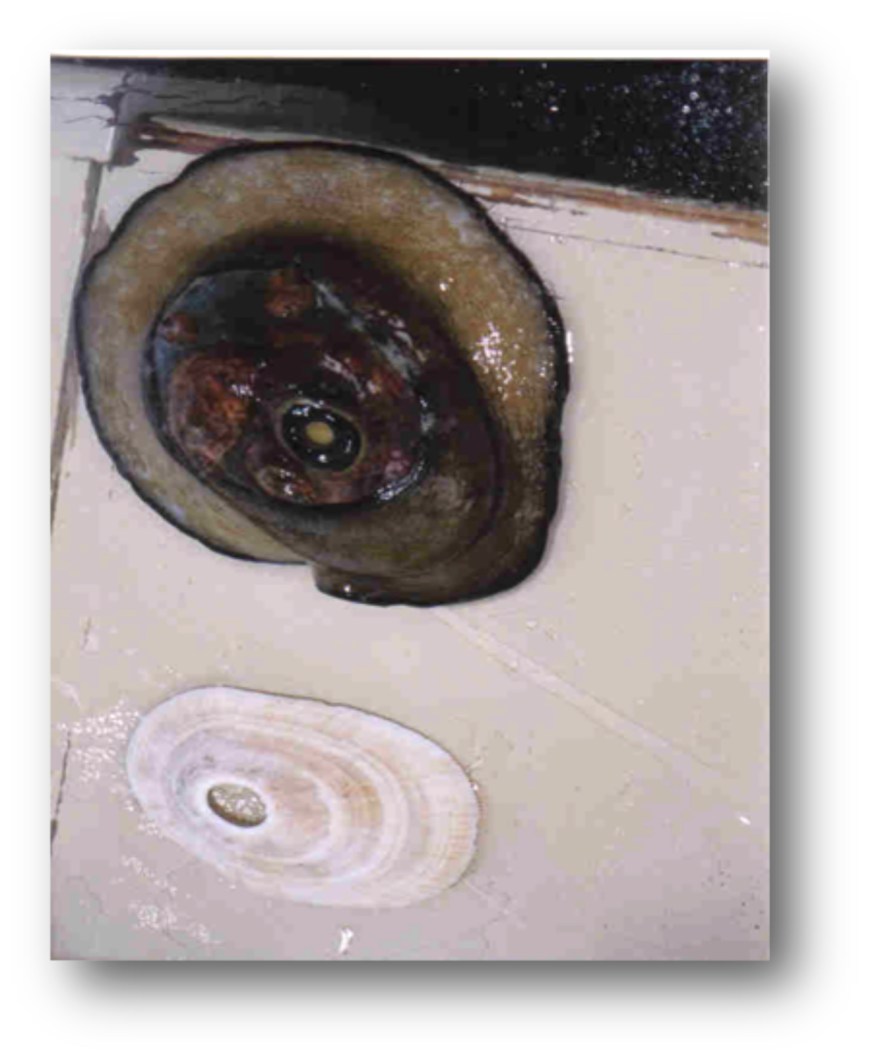Giant Keyhole Limpet (Megathura crenulata)
Where found: Rocky Intertidal, Monterey-Central Baja California
What’s their life like: Usually at night, they will move around on algae-covered rocks.
What do they eat: Algae, Ulva
Reproduction: Egg/Sperm release
Adaptations: These keyhole limpets are large, growing up to 60-132 mm., and they usually have a shell largely concealed in the tough fleshy mantle.
Interesting facts: They draw water in under the front end of their shell; the water then passes over a pair of gills and exits through the keyhole. They are closely related to abalone.
Although these aquatic creatures do not have eyes, they have other adaptations and features that allow them to interact with the world around them. Special chemoreceptor cells are highly sensitive to certain chemicals found in the mucus that limpets leave behind them. Limpets can follow their own mucus trails to navigate back to preferred sleeping and eating spots. Like other animals sensitive to chemical signals, it is believed that these animals can also communicate with each other with chemical messages.
Classification:
Phylum: Mollusca
Class: Gastropoda
Superfamily: Fissurelloidea
Family: Fissurellidae
Scientific Name: Megathura crenulata
Common Name(s):giant keyhole limpet



Last revised 15-Jan-21


